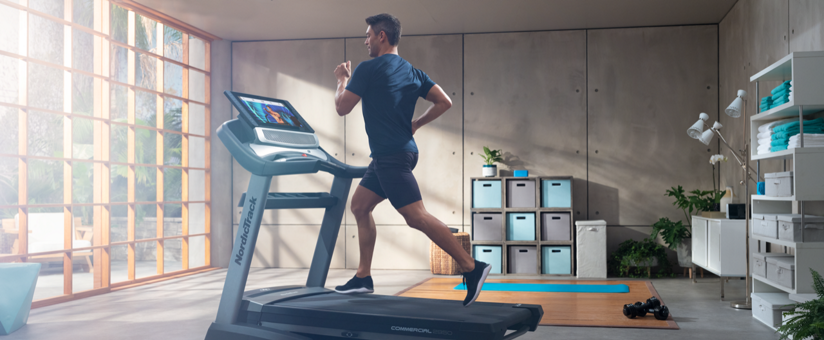Setting clear and realistic goals is key to progress, especially when working out at home. Find out how to plan your sessions and take your schedule and physical fitness level into account to create a workout plan that is scalable and personalised.
Adjusting your goals to your schedule and planning your sessions

To be sure that you set realistic goals, take your schedule into account: you can’t expect to see the same level of progress when you train once a week versus every day. Take stock of your schedule to determine the number of sessions you could achieve at home on a weekly basis, setting aside time slots that are large enough to include a warm-up and a stretch, so as to make your post-training recovery more effective. If you’re new to the sport, focus on consistency and start with short sessions once or twice a week, for instance.
To set your training plan, start by outlining your overall objective, such as losing weight, building muscle, toning, gaining flexibility, building strength, or taking part in a half-marathon or bike race. Then list the steps you need to take to achieve it. Ideally, you should have a long-term objective and some milestones, which would serve as small victories to motivate you further. Write down your training plan in your daily planner and display it in your workout room.
Set your plan in line with your physical abilities and fitness level

Make sure that your goals are consistent with your fitness and performance level. They should be ambitious enough to make you want to push yourself and make progress, but also attainable, so that you maintain your motivation and your self-confidence.
Don’t hesitate to rely on the SMARTER method, which is often used in the field of personal development. As an acronym that refers to greater intelligence, SMARTER is ideal for helping you set realistic and motivating goals. Your goals should be:
- Specific: customise your training program to match your profile to a tee, taking into account your strengths and weaknesses, your aspirations, as well as the time and resources you have at your disposal at home.
- Measurable: choosing numeric indicators, such as a daily number of steps, a waist size, a number of burnt calories, or a precise distance to cover, enables you to easily see your progress and gradually raise your difficulty level. For example, giving yourself 2 months to lose 5 kg is more motivating than hoping to play sports to lose weight.
- Achievable: don’t just aim straight for your final objective. Breaking down your journey into progressive stages that build on one another is a sure-fire way to invite success into all your sessions and keep you motivated.
- Realistic: your schedule, the layout of your workout area, your performance level, and your chances of development in each of the fields pertinent to you require careful consideration to set relevant and attainable goals. You can draw inspiration from workout programs you already have in place, or from the advice of nutritionists and fitness coaches, adapting them to your body and your abilities to achieve your dream results.
- Time-bound: setting a deadline for your result is very important, enabling you to stagger your exercises and time manage your workout better.
- Exciting: sport is, above all, a pleasure. See your training as a game and make sure you diversify your activities. There’s always more than one way to reach your objective.
- Rewarding: when you’ve given it your best, you can pamper yourself with a small reward. There’s no shortage of options here, but try to connect it with your sports practice somehow. For instance, you could put together a more playful session than you normally would, to let off steam, or you could treat yourself to some new equipment for your home fitness area.
Assess your progress and gradually adjust your objectives

Monitor your progress regularly so that you can adjust your strategy, if needed. Your initial goals are the foundation you can build your plan on, but your workout plan will benefit from being flexible. You may find that you’re advancing faster than expected, or you could find new ways to work on your technique as you practice your sport.
A performance analysis will show you the headway you’ve made and it will give you the will to continue to challenge yourself. Keeping track of indicators like weight, muscle mass ratio, and body fat percentage on a body composition scale, and taking measurements or even photos and videos during your sessions will help you visualise your progress. Log your achievements on a smartphone app, smartwatch, home fitness device, or fitness journal. As soon as you’ve reached a goal, imagine the next one, and press on one challenge at a time.
Check out our Fitness & Training page for more advice.
